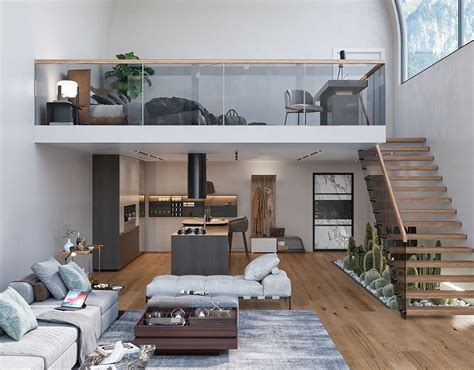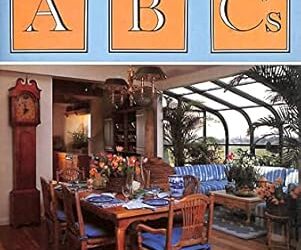Embark on a journey through the world of loft interior design, where creativity meets functionality in a harmonious blend. Discover the origins, evolution, and defining elements that shape these unique living spaces.
 .
.

Introduction to Loft Interior Design
Loft interior design is a style that emphasizes open spaces, high ceilings, and industrial elements. It often features exposed brick walls, ductwork, and large windows that allow plenty of natural light to flow in. The overall aesthetic is a blend of modern and rustic, creating a unique and stylish living space.History and Evolution of Loft Interior Design
Loft interior design originated in the 1960s in New York City when artists began converting old industrial spaces into live/work studios. These spaces were characterized by their large, open layouts and raw, unfinished feel. Over the years, the style has evolved to incorporate more refined elements while still maintaining its industrial roots.Key Elements of Loft Interior Design
- Exposed Structural Elements: Loft interiors often showcase exposed beams, pipes, and ductwork, adding to the industrial charm of the space.
- Open Floor Plans: The layout of a loft typically includes a large, open living area without many dividing walls, creating a sense of spaciousness.
- Industrial Materials: Elements such as metal, concrete, and reclaimed wood are commonly used in loft design to enhance the industrial aesthetic.
- Lots of Natural Light: Large windows and skylights are essential in loft spaces to maximize natural light and create a bright and airy atmosphere.
- Minimalist Furnishings: Loft interiors often feature minimalist furniture and decor to maintain a clean and uncluttered look that lets the architectural elements shine.
Space Planning in Loft Interior Design
When it comes to loft interior design, maximizing space is essential to create a functional and visually appealing living or working environment. Here are some tips and considerations for effective space planning in a loft setting:Maximizing Space in a Loft Setting
To maximize space in a loft, consider utilizing vertical space by incorporating tall shelves, mezzanines, or loft beds. Opt for multi-functional furniture pieces that can serve more than one purpose, such as a sofa bed or a storage ottoman. Additionally, keep the layout open and uncluttered to create a sense of spaciousness.Space Planning Considerations for Different Types of Lofts
When planning the layout of an industrial loft, embrace the raw elements like exposed brick walls and ductwork while keeping the space open and airy. For live/work lofts, ensure a clear separation between the living and working areas to maintain productivity and relaxation. Consider using room dividers or furniture placement to delineate different zones.Tips for Optimizing Layout and Flow in a Loft Space
- Use area rugs to define different zones within a loft without the need for walls.
- Consider the natural light sources in the space and position furniture accordingly to enhance brightness.
- Choose a cohesive color palette to create a sense of unity throughout the loft.
- Utilize mirrors to reflect light and make the space appear larger.
- Think vertically and make use of high ceilings by incorporating hanging plants or artwork.
Furniture and Decor for Lofts
When it comes to furnishing and decorating a loft space, it's essential to choose pieces that not only complement the industrial aesthetics of the interior but also maximize the functionality of the space. Finding the right balance and scale is crucial in creating a harmonious and visually appealing environment.Furniture Choices for Lofts
When selecting furniture for a loft, opt for pieces that have clean lines, minimalistic designs, and a mix of materials such as metal, wood, and leather. Industrial-style furniture like metal-framed sofas, reclaimed wood coffee tables, and leather armchairs can add character to the space while maintaining a modern lookImportance of Balance and Scale
Achieving the right balance and scale in furniture selection is key to prevent the space from feeling overcrowded or empty. Large, statement pieces like a spacious sectional sofa can anchor the living area, while smaller accent pieces like a sleek dining table can complement the overall design without overwhelming the space.Decorating Walls, Floors, and Ceilings
To enhance the loft's aesthetic appeal, consider adding artwork, mirrors, or floating shelves on the walls to create visual interest and break up the industrial surfaces. Area rugs can define different zones within an open-concept loft, while pendant lights or exposed light bulbs can draw attention to the high ceilings and add a touch of sophistication to the space.Lighting Design for Lofts
Lighting plays a crucial role in enhancing the ambiance of a loft space, creating a warm and inviting atmosphere while also highlighting architectural features and decor elements.The Significance of Lighting in Enhancing a Loft
Proper lighting design can transform the look and feel of a loft, making it appear larger, cozier, and more stylish. It can also influence the functionality of the space, providing adequate illumination for various activities.Comparison of Different Types of Lighting Fixtures
- Recessed Lighting: Ideal for providing overall illumination without taking up space.
- Pendant Lights: Perfect for adding a focal point and task lighting over specific areas like dining tables or kitchen islands.
- Track Lighting: Offers flexibility in directing light to different areas and highlighting artworks or architectural details.
- Floor Lamps: Great for adding ambient lighting and creating a cozy atmosphere in living areas.
Tips for Creating Layered Lighting Effects
Layered lighting involves combining different types of fixtures to create depth and dimension in a space. Here are some tips for achieving this effect in a loft:- Start with Ambient Lighting: Use recessed lights or ceiling fixtures to provide overall illumination.
- Add Task Lighting: Incorporate pendant lights or under-cabinet lighting in work areas like kitchens or home offices.
- Include Accent Lighting: Use wall sconces, track lights, or picture lights to highlight artwork, architectural features, or decor pieces.
- Integrate Dimmers: Install dimmer switches to adjust the brightness of different light sources and create the desired mood in the space.












